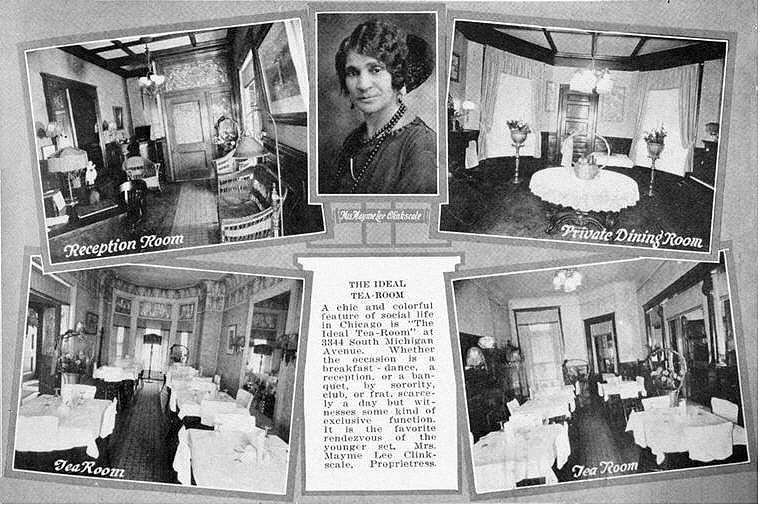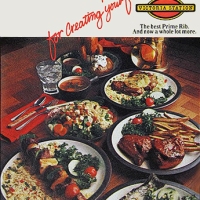Swedes began immigrating from rural Sweden to the United States in significant numbers in the 1870s, but it took a while before Swedish smörgåsbords were introduced to the American public. The earliest ones opened in cities in the 1910s, but even in the 1930s proprietors still found it necessary to explain the concept to Americans who were not of Swedish ancestry.
In 1912 a self-proclaimed high-class Swedish restaurant called Henry’s opened in New York City [advertisement 1918]. There had been earlier Swedish restaurants in the city but they appeared to serve workers and were unlikely to have offered smörgåsbord. In 1915 another first-class restaurant opened in New York, Scandia, headed by Gerda Simonson. It was the first known restaurant of its kind run by a woman.
It is somewhat surprising that these early examples were in New York City since both Chicago and Minneapolis had larger populations of Swedish immigrants. But it’s likely that at that time NYC restaurants were better able to attract travelers from abroad as well as Swedes living there.
Despite the presence of a Swedish restaurant with a smörgåsbord at the 1893 Columbian Exposition in Chicago, there do not seem to have been many such restaurants in Chicago until the 1920s. They were also evident in Rockford IL. As was true of tea rooms, many were run by women. The Bit of Sweden in Chicago, opened in 1925, billed itself as a tea room, but of course Prohibition was in effect, ruling out the smörgåsbord’s classic accompaniment to herring, a shot of Aquavit. The number of smörgåsbord restaurants increased during the 1930s, particularly after Prohibition ended. [pictured:Rococo House, run by the same woman who introduced Bit of Sweden]
At first it seemed that Swedish restaurants in the U.S. relied heavily on patrons of Swedish ancestry who enjoyed them on Sunday evenings. [above Rockford IL, 1928; kropkokn is a cake] Gradually they drew a non-Swedish clientele, many of whom had as much trouble with the concept of smörgåsbord as they did with its pronunciation.
At their finest, smörgåsbord restaurants achieved a high level of artistic beauty in food presentation as is evident in the above photograph of a New York restaurant in 1939.
Newspaper stories had appeared in the late 19th century explaining that Swedish steamships and hotels furnished smörgåsbord as appetizers before a meal. Patrons took a small plate with a slice of bread and then selected a few items to eat while standing, accompanied with a strong drink and beer. They might have seconds but they did not eat so much that they spoiled their appetite for a full meal which they would soon order from their table.
Non-Swedish Americans, however, tended to see the smörgåsbord as a meal in itself, piling their plates high and often returning for more. Soon restaurants adapted by pricing the smörgåsbord separately. For a higher price, patrons could precede a dinner with smörgåsbord if they chose to. In the 1930s the Bit of Sweden restaurant in Los Angeles went to some trouble to explain how it all worked, devoting a page of its menu to this, and instructing patrons that the correct pronunciation was SMIR-GOES-BOORD (rather than SMAR-GUS-BORD). The restaurant charged $1.50 for smörgåsbord with dinner, or $1.00 without, and included a warning on its instructions page that customers had better eat all they took or they would be charged extra.
Other stories also appeared in the 1930s with instructions on how to handle smörgåsbords. In 1948 well known food journalist Clementine Paddleford explained what she learned from the daughter of the manager of NY’s Three Crowns Restaurant — which made its debut at the 1939 NY World’s Fair. She was told there was a system to choosing from its famed 100 items. First, she wrote, take pickled herring and a bit of herring salad along with a boiled potato with sour cream. On the second visit, more fish – maybe shrimp, sardines, smoked salmon, and a marinated mussel. Trip three might be hot dishes, but alternatively could be cold meats, salads, and cheeses if the diner was planning a fourth trip for hot food.
Decades later, smörgåsbord restaurants could still be found, but it seems that the idea of freely choosing food from a spread was being taken over by low-price, no-frills, all-you-can-eat buffets. Some, such as the Sir George’s chain called themselves smörgåsbords, but others named themselves “smorgies.” I doubt many, if any, were owned or operated by Swedish-Americans. [above, Sir George’s in Hemet CA]
As for authenticity, Tracy Nicole Poe explained in her 1999 dissertation that even the early examples of smörgåsbords in the U.S. represented an “invented tradition.” She wrote: “Like other elements of Swedish-American ethnicity . . . the smorgasbord’s origins are more a product of the National Romantic Ideal, and its rituals more concocted from the imagination of community leaders, than they are manifestations of rural immigrant culture. The fact is, most Scandinavian immigrants would probably never have attended an actual smörgåsbord in the classic nineteenth century European sense.”
On the other hand, I think the all-you-can-eat smörgåsbord derivative, though invented, is a genuine representation of American culture.
© Jan Whitaker, 2023















































 It's great to hear from readers and I take time to answer queries. I can't always find what you are looking for, but I do appreciate getting thank yous no matter what the outcome.
It's great to hear from readers and I take time to answer queries. I can't always find what you are looking for, but I do appreciate getting thank yous no matter what the outcome.


